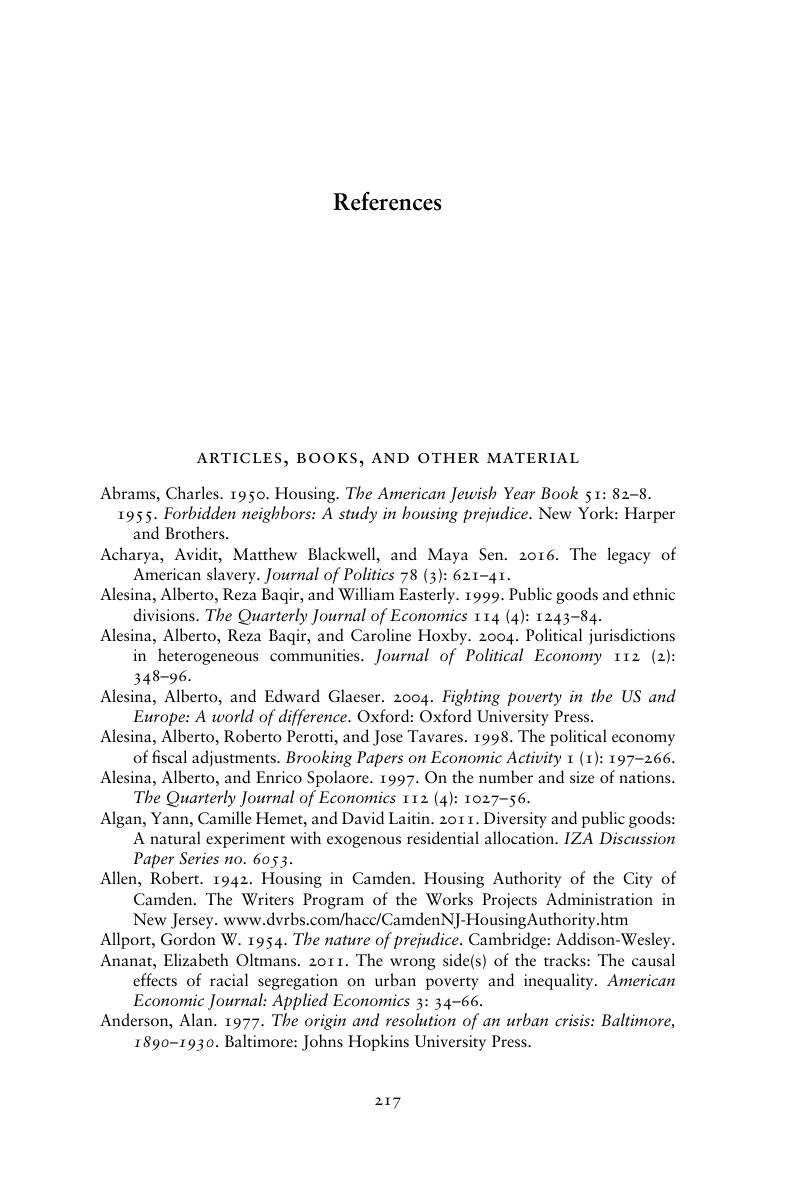Book contents
- Segregation by Design
- Segregation by Design
- Copyright page
- Dedication
- Contents
- Figures
- Tables
- Acknowledgments
- Prologue
- 1 Introduction
- 2 A Theory of Segregation by Design
- 3 Protecting Investments
- 4 Engineering Enclaves
- 5 Living on the Wrong Side of the Tracks
- 6 Cracks in the Foundation
- 7 Segregation’s Negative Consequences
- 8 Locking in Segregation through Suburban Control
- 9 The Polarized Nation That Segregation Built
- 10 Concluding Thoughts and New Designs
- References
- Index
- References
References
Published online by Cambridge University Press: 02 November 2018
- Segregation by Design
- Segregation by Design
- Copyright page
- Dedication
- Contents
- Figures
- Tables
- Acknowledgments
- Prologue
- 1 Introduction
- 2 A Theory of Segregation by Design
- 3 Protecting Investments
- 4 Engineering Enclaves
- 5 Living on the Wrong Side of the Tracks
- 6 Cracks in the Foundation
- 7 Segregation’s Negative Consequences
- 8 Locking in Segregation through Suburban Control
- 9 The Polarized Nation That Segregation Built
- 10 Concluding Thoughts and New Designs
- References
- Index
- References
Summary

- Type
- Chapter
- Information
- Segregation by DesignLocal Politics and Inequality in American Cities, pp. 217 - 248Publisher: Cambridge University PressPrint publication year: 2018



